If you want your students to work more independently during writing time, using writing folders is a great step in that direction! In this post, I’ll describe (in detail) what I put in my students’ writing folders and how I teach them to use those tools. And the best part? You can get all of the materials pictured in this post for free by visiting this link.
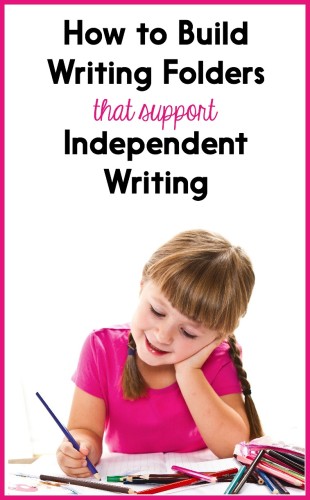
Why Folders?
I know that some teachers have their students write in notebooks. There’s nothing wrong with writing in a notebook, of course, but I feel that young students (K-2) better understand the purpose of writing when they use loose paper and folders.
When children come to school, most of them know what a book is. Presenting the concept of writing workshop as a time to “make books” connects with children’s prior experiences. It also helps them understand why we are asking them to write.
A journal does resemble a book, but if we ask students to fill it up with multiple stories and pieces, it doesn’t have the same “book feeling” where there is a clear, physical beginning and ending.
I’ve also found that using single sheets of paper, and/or stapling loose paper into books is just more practical. Kindergarten and first grade students can easily become confused about which story they were working on, accidentally skip pages, and so on.
Also, if you use stapled books, it’s much easier for students to add in an extra page in the middle of a story. Or, if a child wants to abandon a story and come back to it later, she can quickly grab a new book without having to worry about leaving space to finish the original story.
When a student wants to bring a book home to share with family members, he can do so without having to take (and risk losing) an entire writing journal. Finished pieces of writing can be placed in the classroom library or displayed in the hallway, rather than being forever trapped inside a journal.
Journals can definitely be useful in other situations, but when I’m having students engage in the volume writing characteristic of writing workshop, I think that loose paper and folders are the best options.
Purchasing Folders
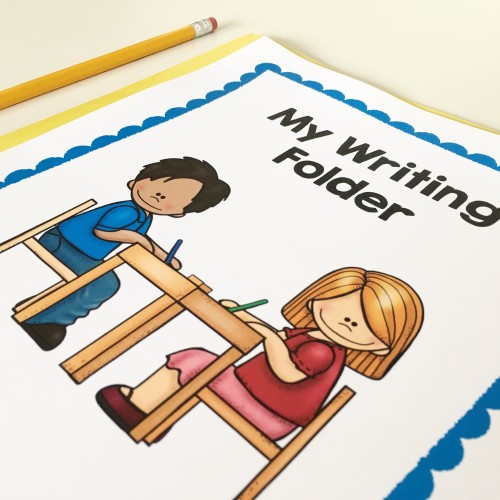
If you can, add folders to your yearly supply list and specify a particular color (so that you and the kids can easily locate the folder). Because I have students add learning tools to their writing folders, I use the folders with prongs in the middle.
I also strongly recommend using folders that are plastic or have a “cardboard” feel – the flimsy ones don’t last very long. My plastic folders, however, typically last all year! If you’re worried about families being able to find the exact kind of folder you want, you may want to purchase them yourself – keep an eye on office supply stores all summer to figure out when the best deals are. 🙂
Folder Logistics
When I’m using writing folders with my students, storage is the first thing I figure out. Kids need to be able to easily, independently, and QUICKLY get out their writing folders so as not to waste precious writing time.
In my Kindergarten classroom, I had tables. My students had behind-the-seat chair pockets, so they kept their writing folders there. When I taught 1st and 2nd, we had desks, so the children kept their folders inside their desks. One of my teammates had her students keep their writing folders in crates, and she positioned one crate near each table group.
No matter how you store your folders, make sure that you do not have to individually pass them out to students. Students should not have to spend time waiting in line to get their folders, because this eats up independent writing time and leaves room for misbehavior.
Battling the Overflowing Folder Monster
I wish I could say that my kids always keep their folders as organized as I teach them to, but…that’s just not the case. 🙂 However, there are a few, simple things you can do to battle the Overflowing Folder Monster:
- Use red and green stickers. I place a red sticker on the right side of the folder (for finished pieces; red = stop) and a green sticker on the left side of the folder (for in-progress pieces; green = go). That way, students immediately know what they will be working on during independent writing time. When they are finished with a piece, they put it on the “red” side without needing to announce to me (and the rest of the world) that they are finished.

- Have students clean out folders every 2 or so weeks. At first, I had students clear out their folders at the end of a unit. However, since my writing units are somewhat lengthy, this was not always often enough. Instead, you can have students take home some of their writing every couple of weeks (have them save pieces that they may want to return to later or “clean up” for future publication).
- Do a “folder check” at the end of writing time. Every couple of days, display a photo of what a “neat” writing folder looks like. Train them that when you say “Folder check!”, they need to look at the photo (project it on an interactive whiteboard or screen), check their own folder, and fix it up. You can also give out a “clean folder award” periodically as a little motivation. This only takes a minute or two but will save you a headache – plus, students will take more pride in their work when it isn’t crumpled up and folded.
What To Put in the Folder
Now for the fun (and free) stuff! Throughout the year, I introduce various “tools” to my students and add them to their writing folders (using the prongs in the middle of the folders). These tools serve as reference materials that help students write more independently.
Before I add a tool to students’ folders, I model how to use it several times. I really hype it up and talk about how helpful it will be for them. After they’ve seen me use it for a few days in a row, then I give it to them to add to their folders (or I add it myself when working with Kindergarten or first grade kiddos).
Here are some examples of tools students can keep in their writing folders, as well as ideas for how to introduce them:
Alphabet and Spelling Charts: For the first few months of school, I never tell a single child how to spell a word during writing time. Yes, really! Although correct spelling certainly has it place (especially when publishing work and sharing it with others), it’s so important to teach kids that they are responsible for using different strategies to spell words independently. Just a couple of weeks into Kindergarten, I begin modeling how to use an alphabet chart to spell words I don’t know. It sounds something like this:
“Boys and girls, today I’m going to show you how I use an alphabet chart to spell a word I don’t know. Let’s imagine I’m writing a story about going to the park. I want to write, ‘We ran to the swings.’ ‘We’ is a word that I already know, so I’ll write it quickly. We…ran. I don’t know how to spell ‘ran,’ but I can stretch out the word and use the alphabet chart to figure out which letters to write. Rrrrraaaaannnn. Say it with me: rrrraaaaan. First, I hear the /r/ sound. What word on the chart starts like /r/? Aaaaple…no. Ssssun…no. Rrrrobot…yes! I’ll write the letter ‘r.’ Rrrraaaaannn. Now I hear the /a/ sound. That’s /a/ like ‘apple,’ so I’ll write the ‘a.’ Rrrraaaaannn. The last sound I hear is /n/. Hmm…does anyone see a picture that starts like /n/? ….That’s right, I need the letter ‘n.’ Rrraaann. I just wrote ‘ran’ by using the alphabet chart!”
I model using the alphabet chart more than a couple of times, however. I keep a writing folder at my “minilesson station” and model how to use it throughout the year. I’ve found that while some of my Kinders “get it” immediately, others need more time and repeated exposure to the process in order to use the chart independently.
In the free download, you’ll find a simple alphabet chart (color or black and white), as well as a blends and digraphs chart, and a vowel chart.
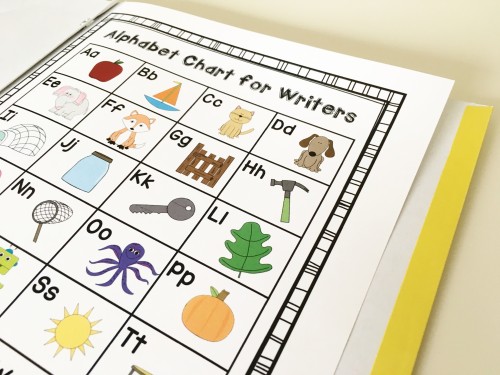

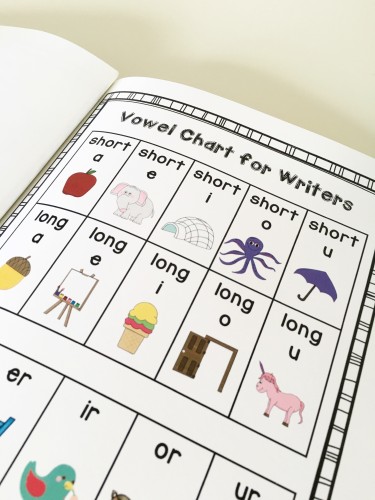
Editing Checklists: It’s tough to get students to edit their work before calling it “finished.” However, it helps when you get students in the habit of reviewing a checklist when they finish a piece of writing. Keep an editing checklist in your own model writing folder and show students how you look through every piece of work that you finish. Think aloud and model how you consider each skill on the checklist. And if you haven’t yet taught all of the skills that are listed, simply have students highlight the ones they are responsible for. As the year goes on and you teach more editing skills, they can highlight more skills on their checklists.
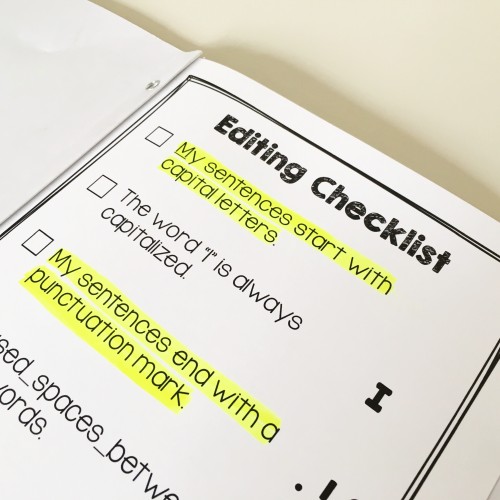
Genre Mini Anchor Charts: We teach students a bunch of different strategies to try out in their own writing, but do they remember them all? Probably not! Giving students mini-anchor charts to keep in their folders is a great way to help them keep track of what they should be working on as they write. My writing folder freebie contains different levels of narrative, information, and opinion/persuasive writing that are appropriate for Kindergarten, first, and second grade students. Just as with the editing checklists, you can have students highlight the strategies that they are responsible for using.
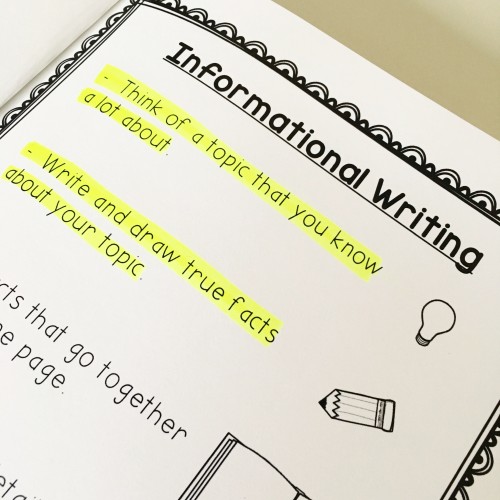
In addition to the tools featured above, the free download also includes transition word lists, visual writing scaffolds, and a chart of the writing process. The materials work great with my Kindergarten, first, or second grade writing units:
Click here to download the materials and get started with writing folders today!

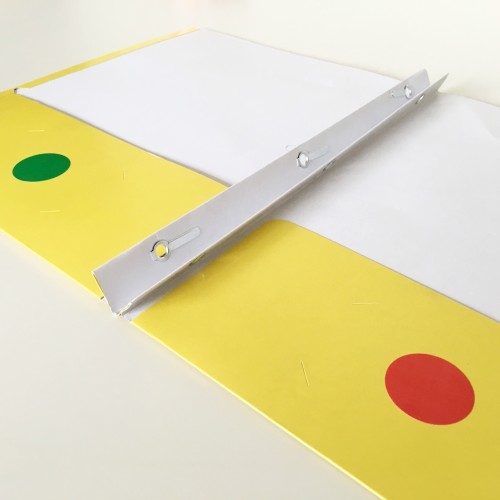
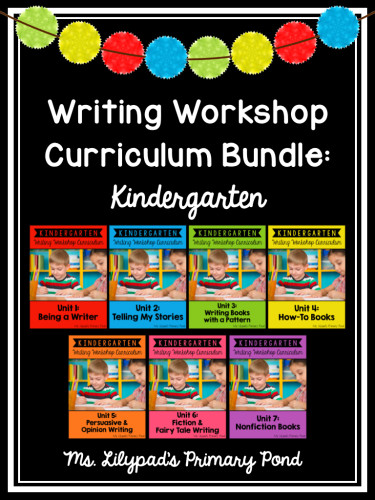
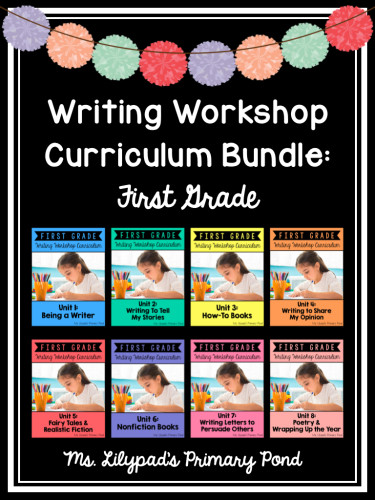



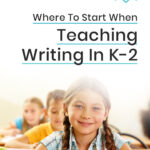
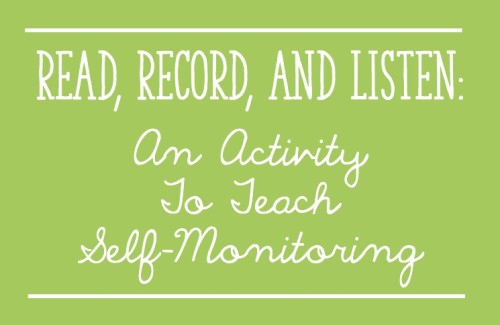
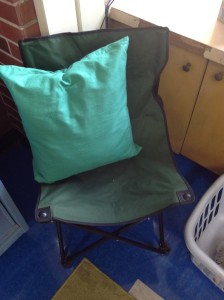
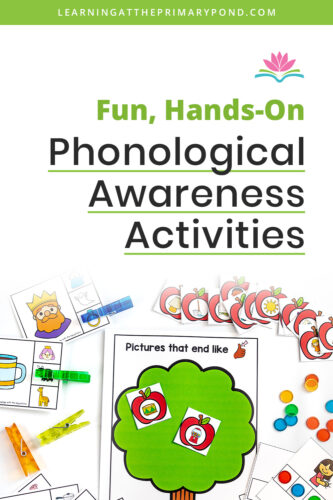






Hi,
I downloaded the writing folders and went to print them at work today. They were too large and every page was cut off at the bottom. I tried to print by reducing the size to fit the page, and they still do not print correctly. Is anyone else having this problem?
Thanks,
Lsa
Hi Lisa! So sorry it’s giving you trouble. What I’d recommend is to update your Adobe Reader, restart your computer, and then use the “print to image” option. You can find directions on how to do that here: https://support.teacherspayteachers.com/What-if-my-file-isnt-printing-correctly-c15-a97.html Let me know if you’re still having trouble! Alison
Thanks for sharing your ideas! I will try to adapt them to my class. As you said, K students have a hard time sometimes using their journals, so maybe introducing this new concept of writing might work better. (:
Yes, it’s hard for the little ones! I hope it works well with your kiddos! 🙂 Alison
I already use a folder for my second graders, but this is all so organized. Thanks so much for sharing. I can’t wait to incorporate it into my writing workshop!
Hi Karla, so glad it’s helpful! I do love organization. 🙂 Thanks for reading and commenting! Alison
Do you have the writing tool kit in Spanish?
Hi Esmeralda! I have certain materials in Spanish, but not all of them. I’ll email you. 🙂 Alison
Could I get them in Spanish also?
I love what you’ve done here. Everything is so organized and succinct. It’s just what I needed!
Hi Tammy! I just have them in English – so sorry!
Alison
Hi,
I am having trouble downloading this writing folder file. Is it available on TPT? I could not find it. I am excited to use these materials with my first graders. Thank you!
Hi Michelle! Did you use this link? LearningAtThePrimaryPond.com/free
If you’re still having trouble, email me at LearningAtThePrimaryPond@gmail.com and I’ll send it to you another way. 🙂
Alison
Hi Alison,
Fantastic guidance and resources. I am a graduate teacher, and believe these folders will be of great benefit to build independence and writing stamina with the students.
Just wondering where you got the folders from? Not having much luck locating a folder that includes both prongs AND inside pockets.
Thanks,
Meg
Hi Meg! I have gotten them in different places over the years (Staples, Office Max, maybe even Walmart). Office Max always seems to have them where I live!
Alison
Hello, do you have this folder tools in Spanish?
Just English, sorry! You can get a different Spanish freebie here: learningattheprimarypond.com/gratis
🙂 Alison
Hi Alison!
Do you laminate the writing folder materials? How do you keep them intact all year?
Thanks!
I usually do laminate them, or print them on cardstock! (Especially if it’s something I know we will want in there all year long.)
Alison
I teach in a bilingual classroom. Do you share what you have in Spanish? Thank you.
Hi! I do have some Spanish freebies (not this particular one). Here is a guided reading freebie: LearningAtThePrimaryPond.com/gratis
And then here are some Spanish teaching resources: https://www.teacherspayteachers.com/Store/Learning-At-The-Primary-Pond-Alison/Category/Bilingual-Materials-13260
Let me know if you have any questions!
Alison
Thanks you so much Allison for helping me with my writing block. I have struggled with teaching writing in the past and can not wait to try your approach. I have your file in my TPT wishlist and pray to have the funds to purchase it before school starts. Your file looks laid out in a manager that’s easy to follow.
Thank you and I look forward to learning more from you!!
You’re welcome, Dianna! I’m so glad the resources have been helpful!!
Alison
Hi Alison,
Do you have writing folder resources in Spanish? Where can I get them? By the way, great webinar on Thursday. I can’t wait to get started!
Hi Mary! I don’t have them in Spanish, unfortunately. I used a few things I pulled from the Estrellita program in my Spanish writing folders. I do have a different Spanish freebie! Learningattheprimarypond.com/gratis
I’m so glad you enjoyed the workshop!
Alison
Alison,
I am moving to 1st grade this year and these resources are exactly what I was looking for! Thank you so much!
Rebecca
So glad this was helpful, Rebecca!! Thanks for reading!
Alison
I love your website. I get great ideas from you. Thank you for your wealth of knowledge that you so kindly share. Hoping my district buys your writing bundle package. I submitted a request. crossing my fingers 🙂
Thank you so much!! I appreciate your support!
Alison
I have a 4 yr old and he will be in kindergarten in the fall. Right no he staying home because of this covid. How you suggest I introduce these to him.
Hi! Thank you for your question! At 4 years old, we probably wouldn’t expect most students to write yet. Though some certainly might be ready!☺️ A writing activity you can do at home before Kindergarten might be him drawing a picture and then telling you a story about it. If you’d like to read more about what kind of instruction happens in Kindergarten, check out this blog post: https://learningattheprimarypond.com/blog/how-to-launch-your-kindergarten-writing-workshop/
What a wonderful video! i got so much out of it!!
Glad it was helpful!
Thanks so much for the writing resources. I will try them out with my special need students next term after the two weeks holiday.The resources are so nice and i believe my students will enjoy doing it.
Great, Alison! Let me know how it goes!